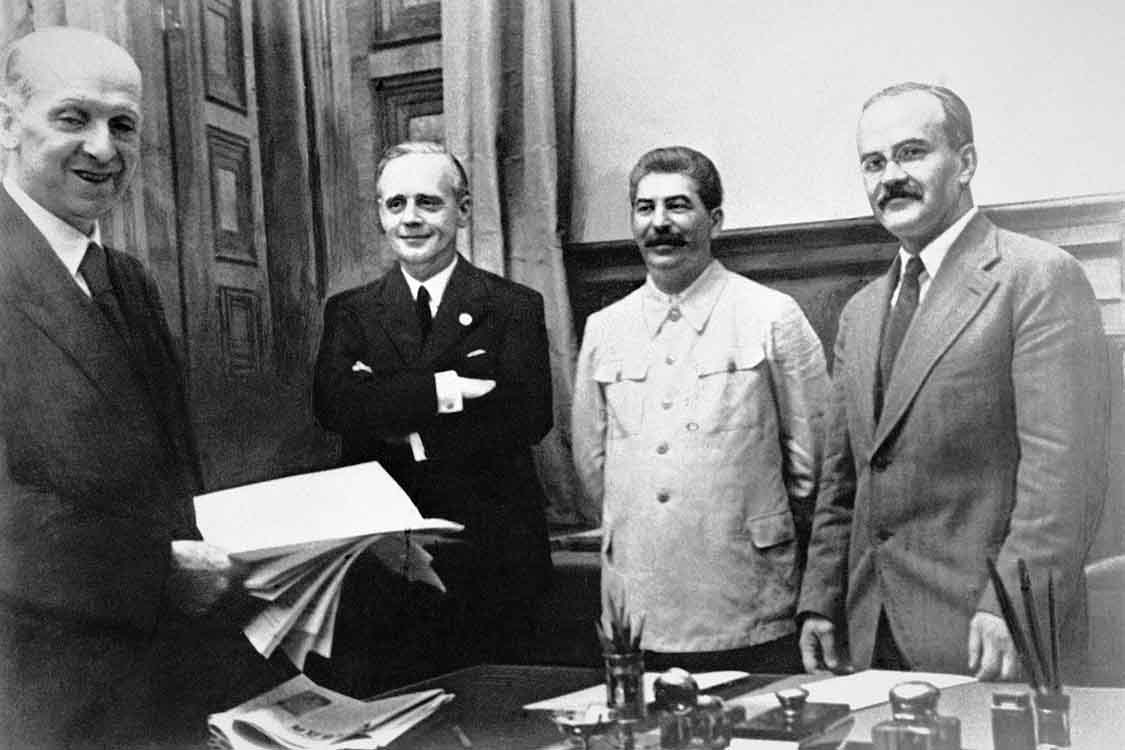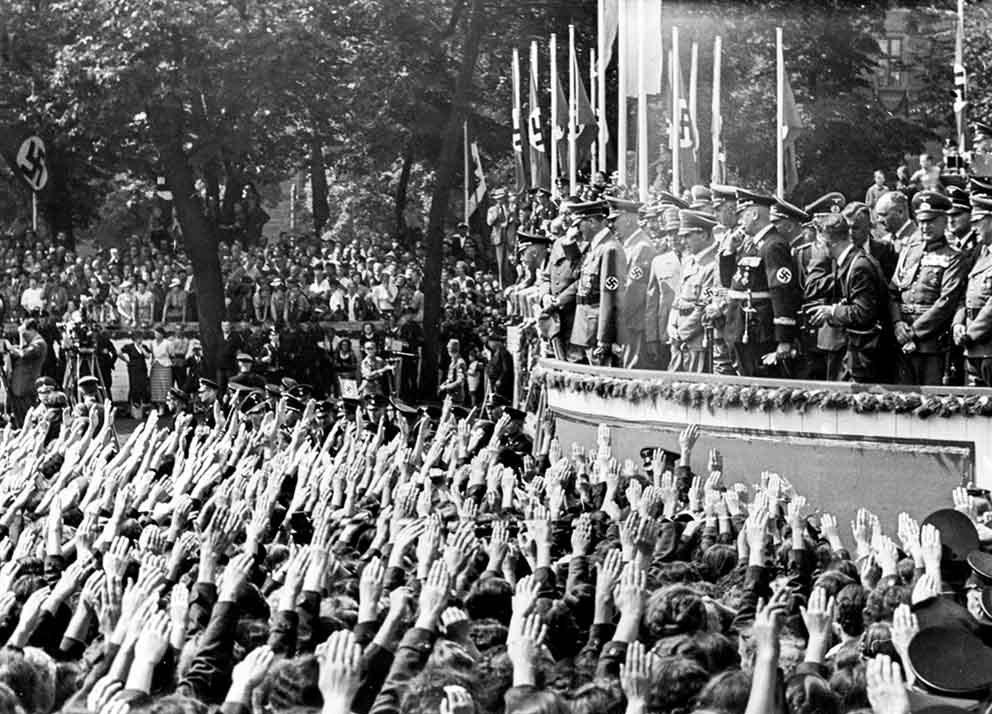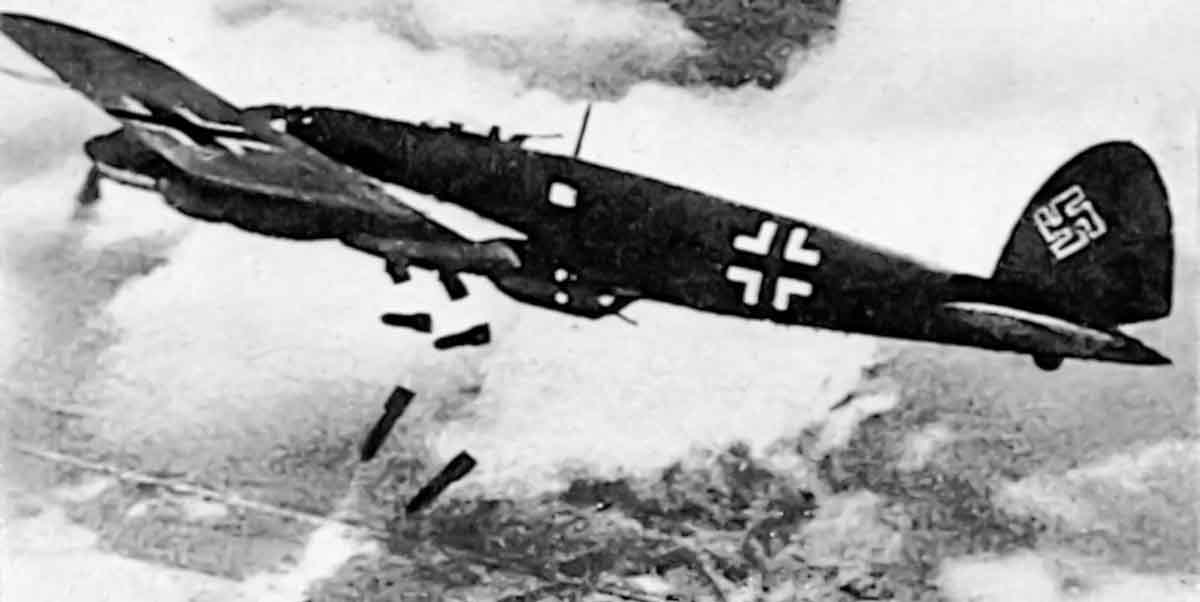Not the union between Paris and Helen, or Cleopatra and Octavian, but between Hitler and Stalin was the most tragic and costly affair in history. The states of Central and Eastern Europe paid for it with their borders and resources, while the nations there paid with their culture, possessions, multi-generational trauma, and the lives of millions.
The most striking symbol of Hitler and Stalin's criminal collaboration is the Molotov-Ribbentrop Pact, signed on August 23, 1939, by the foreign ministers of the Third Reich and the Soviet Union (the pact's name comes from their surnames). It stipulated that in the event of a future war, these countries would divide Central and Eastern Europe along a defined border, roughly along the Pisa, Narew, Vistula, and San rivers. In the north, the northern border of then-Lithuania was to define the boundaries of their spheres of influence.

August 23, 1939, in Moscow. From the left: Friedrich Gauss, head of the legal department of the German Foreign Ministry, German Foreign Minister Joachim von Ribbentrop, Joseph Stalin, and Soviet People's Commissar (Minister) for Foreign Affairs Vyacheslav Molotov. (Source: Wikipedia)
The alliance between the USSR and the Third Reich before World War II may seem surprising given the final outcome of that conflict. In 1945, the Soviets were among the victors, while the Germans were defeated. Despite ideological differences, both totalitarian regimes shared much in common, ultimately uniting them in a bond of criminal friendship and resulting in cooperation in the early years of World War II.
The roots of this cooperation can be traced back to the early 1920s, when Germany and Soviet Russia signed the Treaty of Rapallo, mutually recognizing each other and waiving claims for losses suffered during World War I. In subsequent years, economic and arms agreements were signed.
The vast territories of the USSR became both a training ground and a factory for the German army, secretly reborn from the West. In return, the Soviets received weapons, technology, and educated specialists. Both totalitarian regimes also shared a hatred of Poland, at the expense of which both Germany and the Soviets sought to expand their borders, returning them to their former state of partition.
After Hitler came to power in 1933, relations between Germany and the USSR became hostile, and Stalin attempted to forge an anti-fascist coalition. As Germany's power grew, however, he realized that by offering Hitler friendly neutrality regarding his plans to conquer Poland, and later Western Europe, he himself would gain the opportunity to seize most of Central and Eastern Europe.
England and France couldn't promise him this before World War II. Hitler could. And so he intended to attack the USSR in the near future. Stalin took this into account, but he reckoned that Germany would be bogged down in a long war with the French and British. An agreement with Hitler seemed the perfect solution – the costs in the form of millions of deaths, terror, and mass murder were unimpressive.
Contemporary Russian propaganda attempts to portray the Soviet Union as the main force in the anti-Hitler coalition during World War II. Europe owes peace and liberation from the Nazis and fascists to the Soviets. The Great Patriotic War—as the armed conflict with the Third Reich of 1941-1945, following Hitler's attack on the USSR, is known in Russia—is the founding myth of Vladimir Putin's state.
However, the narrative of the heroic Soviets ignores the fact that from 1939 to 1941, the USSR was an ally of the Third Reich. Together with the Soviets, they carved up Central and Eastern Europe, forcibly annexing over half of pre-war Poland, parts of Finland and Romania, and the entirety of Lithuania, Latvia, and Estonia. In the conquered territories, the Soviets committed mass atrocities and imposed a reign of terror that affected approximately 22 million people. The new government's hallmarks were expulsions, deportations to Siberia, looting, rape, brutal interrogations, and murder of the intellectual elite. Katyn was a defining event in this tragic list of crimes.
The key to the Soviet Union's grip on Central and Eastern Europe was the Molotov-Ribbentrop Pact. The Iron Curtain, which separated the Western and Eastern worlds after World War II, was the adopted daughter of Stalin's August 1939 agreement with Hitler. Based on this agreement, the USSR occupied territories in 1939-1940, which it did not relinquish later, securing its dominance over them as a coalition partner of the Western powers in the fight against the Third Reich.
However, the alliance shifted only in the summer of 1941, when Hitler turned against Stalin and attacked the USSR, and the Soviet state was threatened with collapse. Previously, the Soviets had been working hand in hand with the Nazis, not only accepting their crimes but also constantly collaborating with them and supporting the Germans with supplies of raw materials and grain, among other things. On September 22, 1939, the allied armies of the two totalitarian states even held a joint parade in Brest-on-the-Bug—on the remnants of Poland they had torn apart. On September 28, the Third Reich and the USSR signed an official alliance treaty on "borders and friendship." Secret annexes stipulated, among other things, coordinated efforts to combat the Polish resistance movement, which resulted in cooperation between the Gestapo and the NKVD.
The Hitler-Stalin alliance left an indelible mark on the states and nations of Central and Eastern Europe. The tragic consequences of the German-Soviet friendship are felt to this day.








